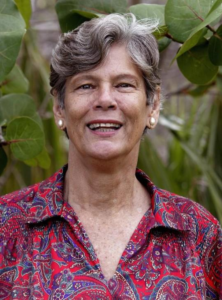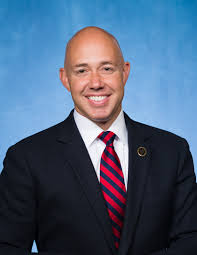By Maggy Hurchalla, environmental activist
The assertion that Republican U.S. Rep. Brian Mast has forced the U.S. Army Corps of Engineers to drain Lake Okeechobee and endanger the drinking water of 8 million people could only be made in a fact-free universe.
Last month, Ryan Rossi, director of The South Florida Water Coalition, contended in op-eds in The Sun Sentinel and Palm Beach Post that Mast had persuaded The Army Corps of Engineers to “deviate from its longstanding lake management schedule and drain Lake Okeechobee year-round to levels lower than normal.”
Mast wants the lake level kept lower to reduce the possibility that lake water polluted with blue-green algae will be discharged through the St. Lucie River and foul the waters that run through his Treasure Coast district.

Rossi contends that keeping the lake low threatens the region’s supply of fresh water and that such a threat is exacerbated by the Covid-19 pandemic. People forced to stay home are using more water and need more of it.
“This dangerous political stunt to gain votes could very well leave nearly 8 million Floridians with a water crisis during a worldwide health crisis,” Rossi wrote.
While the lake has not fallen below the water shortage line, it is going down. However, there has been no drainage and no lowering of the lake this dry season.
There is a plus side to the lower levels. The submerged vegetation in the lake that was destroyed by high water is now growing back. It reduces the size and intensity of toxic algae blooms. Those blooms damage the environment and are a public health problem for people. You can’t drink toxic water.
It was a hot, dry March so there was very little water going into the lake. But water was being removed. Where did it go?
No water is going to Everglades National Park or Florida Bay. A small percentage is going to try to preserve seagrass beds in the Caloosahatchee Estuary.

The great sucking sound you heard that dramatically lowered lake levels was the discharges to the Everglades Agricultural Area. That’s where 60% of the water went. Most of the rest of it went to agricultural irrigation elsewhere around the lake.
The lake is not being drained to eliminate algae blooms in the Treasure Coast and 8 million people are not about to suffer water shortages because of low levels.
The big loser this year in terms of drinking water supply is Miami-Dade County. They are the largest water user in South Florida.
Miami-Dade has no pipes or permits that allow it to draw water from the lake. The county depends on wells in the Biscayne Aquifer.
Miami-Dade benefits from the discharges south to Everglades National Park. Higher water levels on the west side of the wellfields are critical in preventing salt intrusion. Those flows have been cut off. The Miami wellfields don’t benefit from holding water in the lake for the sugar industry to use.
We have a tremendous challenge in implementing the Comprehensive Everglades Restoration Plan and creating a water management system that will serve all our needs.
We can’t meet that challenge by ignoring reality. Look at the numbers:
From April 7 to April 13, enough water was discharged from the lake to cover more than 39,000 acres one foot deep, according to the Sanibel-Captiva Conservation Foundation Weekly Caloosahatchee Conditions Report.
Of that water, 62% went to irrigate sugar and other crops in the Everglades Agricultural Area south of the lake. Only 1.4% of it got to the Water Conservation Areas and none of it got to Everglades National Park or Florida Bay.
Some 5% went southwest to irrigate farmland and 3% went to supply irrigation and utilities in Palm Beach County. Another 27% went out the Caloosahatchee River and almost half of that water went to agricultural irrigation. The other half reached the upper estuary of the Caloosahatchee to protect seagrass beds, according to the report.
At the moment, we’re all worried about the pandemic. To halt its spread, we are having to work together. Well, we need to work together to solve our growing South Florida water problems too.
Maggy Hurchalla is a Miami native, a former Martin County commissioner, and a member of the Everglades Hall of Fame.
“The Invading Sea” is the opinion arm of the Florida Climate Reporting Network, a collaborative of news organizations across the state focusing on the threats posed by the warming climate.




Ryan Rossi’s group, South Florida Water Coalition, seems to be an astroturfing effort by the Big Sugar lobby. There is no active corporation, no board of directors, and the three day old initial corporate filings were filed and dissolved by a Republican lobbyist (Bucky Mitchell) who has been linked to the sugar lobby in the past. No corporation, but they’ve now spent over $5k in advertising on Facebook alone.
What’s most surprising is that the Ryan Rossi ran as a progressive Democrat in 2018. I guess Big Sugar has found its patsy. I hope that the media organizations who still publish his op-eds do some background research next time.